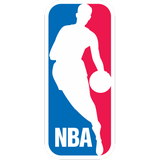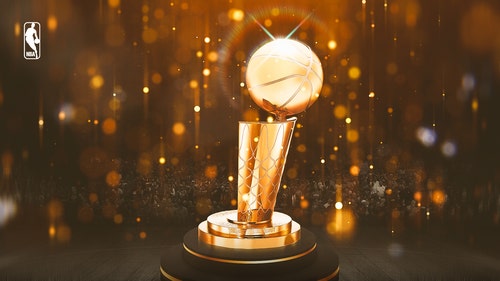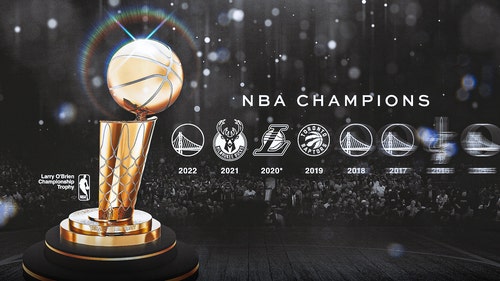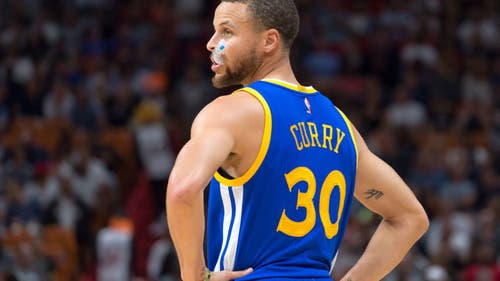
Don't rule out Mavs in title hunt
GAME TIME:Mavs 101, Lakers 96
In winning this game, and the way the won it, the Mavs have undoubtedly strengthened their collective conviction that they will indeed be significant players in the playoffs. The Mavs' fifth consecutive victory constitutes the longest current winning streak in the NBA. More importantly, in downing the defending champion Lakers, the Mavs proved the value of players understanding and executing their respective roles.
Dirk Nowitzki’s normal role is being the Mavs' fail-safe scorer, so it was no surprise that he produced 31 points on 10-for-19 shooting. Lots of guys can have 30-plus games, but Nowitzki did all of his damage strictly within the context of his team’s offense. Except for one or two post-ups, he frees himself for his shots by constantly moving without the ball — a rare undertaking by a 7-footer. Setting screens and then fading. Running baseline cuts past a pair of staggered screens. Curling off weak-side screens. Setting screens, then getting screens and popping open. Filling a wing on fastbreaks and in early offense situations. But the Mavs’ money play, only run in the endgame so that opponents can’t make easy adjustments, has Nowitzki setting sturdy screens for Jason Terry and taking advantage of the resultant switches.
Every potential title-team needs a resourceful and potent scorer who demands special attention.
Because Nowitzki can score from so many spots on the court and off so many kinds of cutting and-screening actions, he fills the bill to perfection.
For 41 minutes against the Lakers, Nowitzki was always under control and avoided reckless freelancing.
Jason Kidd is a championship-caliber point guard who ran the offense to near-perfection (13 assists and only two turnovers), played adequate defense and as a situational shooter nailed four 3-balls. In other words, business as usual for J-Kidd.
J-Kidd is the perfect offensive initiator to pair with Nowitzki, the almost perfect finisher. Indeed, the only flaw in Nowitzki’s resume has been his tendency to fail in the clutch. But perhaps the Mavs now have a set of complimentary players to ease the pressure on him.
These include Caron Butler, who can drive both ways, can post for profit, has a nifty right-to-left crossover and also features a deadly step-back move. In the end, Butler will find a way to score — providing he gets sufficient shot opportunities. The bonus in Butler’s game is his ability to play lockdown defense.
Nowitzki has never played with such a creative two-way guard, and once these guys get in sync — the Mavs will have an explosive double-barreled offense.
Behind Butler is DeShawn Stevenson, a tough defender. For 23 minutes, Stevenson played chest-to-chest defense against Kobe — preventing Bryant from getting a running start by limiting him to 0-for-5 in the first quarter. Spot-duty stoppers off the bench are invaluable.
Shawn Marion is not nearly the player he used to be. Because Marion’s defense is a step slow, he had difficulty containing Kobe, thereby forcing the Mavs to double Bryant whenever he touched the ball in the endgame — a tactic that successfully got the ball out of Kobe’s hands. Even so, against less talented scorers than Kobe, Marion can do an adequate job of defending.
In addition, Marion never was a good passer (two assists versus five turnovers Wednesday), and no longer has Steve Nash to feed him assist-cookies. Still, Marion didn’t try to do anything spectacular, scored on a couple of post-ups, grabbed seven readily available rebounds and scored a workmanlike 10 points.
Yet Marion is experienced, is respected by the refs, and seems willing to accept being a ditch-digger for his latest team.
Brendan Haywood’s primary numbers weren’t especially impressive — 11 points and nine rebounds. But he effectively smothered Andrew Bynum (as evidenced by his five blocks), and in the fourth quarter frequently reduced the Lakers' young center to a stumbling, indecisive turnover machine.
For sure, Butler was hailed as the key catch in the Mavs recent trade. But Haywood gives Dallas more mobility at center than they’ve had in recent memory. Haywood’s forte is defense, but he can also attack the offensive glass and find the hole in the middle of the hoop with a righty jump hook. With Nowitzki, Butler, and Jason Terry handling the bulk of the scoring, Haywood can concentrate on protecting the rim. As such, the Mavs' new center could easily develop into another championship-caliber player.
It’s also to be noted that while the Mavs' biggest offseason acquisition (Marion) has proved to be disappointing, their in-season trade that netted Butler, Haywood and Stevenson is proving to be much more beneficial.
In the absence of Butler, Rick Carlisle chose to start Stevenson and keep Terry in his accustomed role as the scorer off the bench. As such, Dallas ran numerous plays for Terry — weak-side screens and curls, and most significantly high screens in conjunction with Nowitzki. Moreover, Terry was always stationed somewhere on a wing or along a baseline where his defender would be forced to sink into the paint to help on drives by Kidd or Nowitzki. The resulting kick-outs, plus a couple of baseline drives, enabled Terry to hit half of his 20 shots and tally 30 points.
If Terry didn’t play much defense, and had more turnovers (four) than assists (three), his task was to put points on the scoreboard. In fact, without Butler in uniform, about 90 percent of the Mavs' offense was focused on either Terry or Nowitzki.
Every team with championship hopes must have a dynamic scorer off the bench, and Terry is one of the best at what he does. With defenses forced to focus on Nowitzki and Butler, and with Kidd always hitting the open man, Terry only has to demonstrate that he, too, can deliver in the clutch for Dallas to still be playing in June.
Speaking of role players, Eduardo Najera's played nine minutes of physical defense against Bynum. He’s a banger who, working in tandem with (the injured) Erick Dampier can soften up even the strongest big in the league.
Rodrique Beaubois showed quick hands (two steals, one block) in his brief four-minute stint.
Only J.J. Barea failed to make the most of his daylight — shooting 1-for-5, and getting roasted on defense. However, against other smallish guards, Barea can scoot through a defense with water bug quickness and single-handedly change the tempo of any given game.
Meanwhile, Kobe had a down-game — 9-for-23 for 20 points. Also, at least 20 of his shots were ad-libs that flatlined the triangle offense. When he makes his shots, his individualistic adventures are applauded, but when he misses he must accept the onus.
Kobe's teammates put up a good front for a while, with Ron Artest (13 points), Pau Gasol (11), Andrew Bynum (10), and Lamar Odom (21), combining to shoot 63.8 percent from the field.
But the Lakers never did get a handle on the Nowitzki-Terry high-screens. And alas, since Kobe missed a pair of critical treys in the endgame, his supply of magical shots temporarily had been depleted the night before in Memphis.
Still, some shots go in and others bounce out. But Dallas won the game because their money scorers and their role players both earned their pay.
If the Mavs can continue playing with maximum aggression and discipline at both ends of the court — and if Nowitzki, Terry and/or Butler can nail important shots, they’ll have as good a chance of usurping the Lakers as any other team in the West.
STRAIGHT SHOOTING
After three games with the Knicks, here’s what Tracy McGrady has produced:
• Boosted by an understandable adrenalin rush on the part of the hopeful Madison Square Garden fans and his own personal resurrection, a dynamic first half in his initial game.
• Unfortunately, this was succeeded by five halves of mediocre-to-OK performances.
• Through it all, he’s demonstrated no quickness and no lift.
• His shot has mostly been flat.
• His defense has been timid and increasingly ineffective.
• When he was at the top of his game, his startling quickness more than compensated for his being a softee. At first glance, he’s at least two steps slower than he used to be and much softer than ever before.
• But he still understands how to play, so his passwork has been marked by unselfishness and generally acceptable decisions. And he knows how to take full advantage of the angles and pressure points that can lead to his generating makeable shots in certain situations.
After suffering a couple of bumps to his surgical knee, and after being a civilian for so long, it’s understandable that McGrady is still wobbly. However, it’s clear that he is just a shadow of his former self.
No longer a reliable go-to guy, in the foreseeable future T-Mac can be a better-than-average facilitator and a tertiary scoring option. As a free agent the best he can expect will probably be a one-year $3.5M offer from an elite team that already has a pair of dynamic point-makers as well as a shot-blocking back-line that can erase McGrady’s defensive mistakes.
Unfortunately, T-Mac isn’t the first, and won’t be the last, outstanding player whose effectiveness has been radically diminished by injuries. That’s because in the NBA game-time can be a dangerous time.
VOX POPULI
My friends and I have this debate all the time: In a game of one-on-one, who would win, Larry Bird or LeBron James? (I always take Larry.) – Shrey Sharma, Rochester, NY
My pick would be LeBron, and here’s why:
However, I must also issue a disclaimer: Bird’s unparalleled resourcefulness and will to win should never be underestimated.
TRAVELS WITH CHARLEY
While basketball players at the service academies might generally lack the size to compete on equal terms against today’s powerhouse college teams, the hoopers at West Point, Annapolis and Colorado Springs are certainly a unique breed.
That’s because, given their own specific off-court methodologies, they are all trained to kill. Which is precisely why West Point was the perfect place for Bobby Knight to begin his coaching career.
In fact, one of his favorite drills when he was in residence there serves to illustrate the common mentality of both Knight and his players.
The boundaries were a baseline, the mid-court line, and opposite sidelines, and the entire squad would be divided up into two equal teams. Knight would then place the ball on the floor in the precise midpoint of the available playing surface. At his whistle, each team would seek to gain possession of the ball and carry it across the opponent’s sideline.
No passing, punching or kicking to advance the ball were permitted. In man-to-man confrontations, punches, holding, head-butts, tripping, or tackling were likewise forbidden. Everything else was permissible, including flying body-blocks, forearm hacks and elbow smashes.
The losers would run dozens of suicides, and the iodine flowed freely.
When Knight sought to institute the same drill at Indiana, the administration rebuffed him. Who knows how many more NCAA championships The General might have won had he been able to deploy his forces as he so desired.
If you have a question or comment for Charley Rosen, please email charleyrosen@gmail.com and he may respond in a future column.










